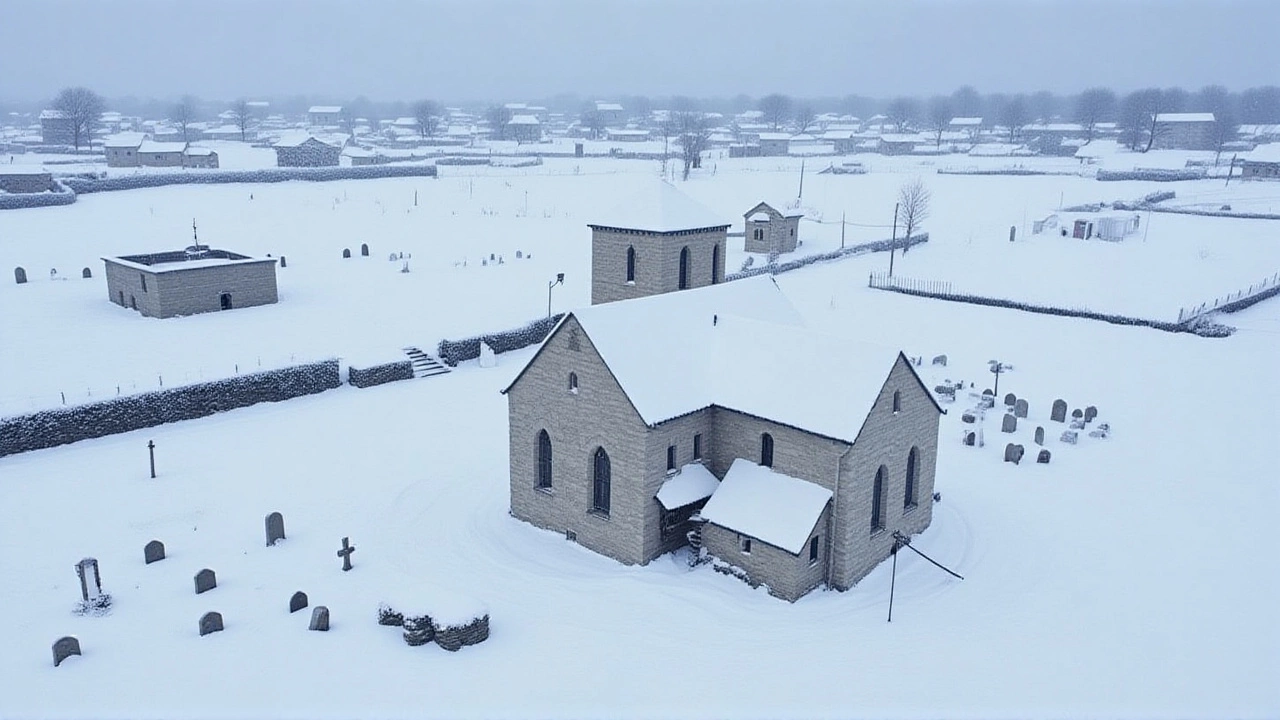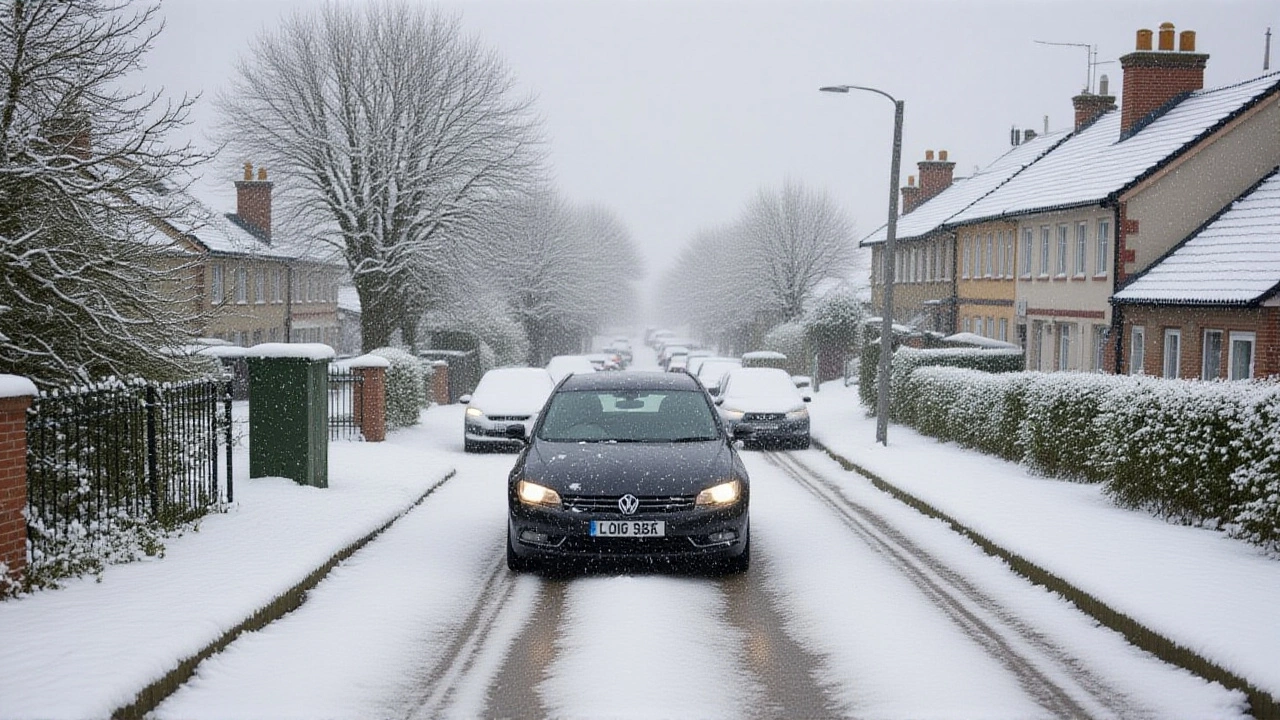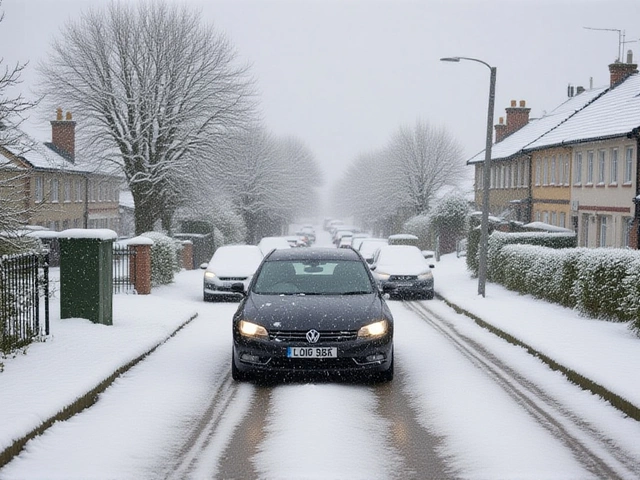After a November that shattered warmth records across the UK, South West England is facing a sharp chill — with overnight temperatures plummeting to 4°C on Monday, November 24, 2025. Just days after Chivenor, Devon hit 14.8°C — the highest November daily minimum since records began in 1996 — the region is now bracing for frost, clear skies, and a biting northerly breeze. The shift isn’t just local; 33 weather stations across the UK broke their November minimum temperature records, turning what was supposed to be a quiet autumn into one of the warmest starts to the month in over a century. Here’s the thing: this isn’t just a cold snap. It’s a dramatic reset after a weather pattern that felt more like late March than late November.
A November That Forgot It Was November
The warmth wasn’t a fluke. On November 5, 2025, Chivenor, Devon recorded 14.8°C, topping the previous record of 14.1°C set in 1996. The next day, Valley, Gwynedd in North Wales hit 14.1°C, breaking a 94-year-old record. Coastal areas from Cornwall to Humberside saw overnight lows that hovered near 13°C — temperatures typically seen in early May. The Met Office attributed this to a stubborn southerly flow, persistent cloud cover trapping heat, and a North Sea that was unusually mild. “It was like the ocean was holding onto summer,” said Dr. Simon Keeling, a meteorologist with the Met Office, in a briefing on November 20, 2025. “The air didn’t just feel warm — it felt out of place.”The Cold Front That Changed Everything
By November 24, the pattern flipped. A deep Atlantic depression moved east, dragging a wedge of colder air behind it. The Met Office’s 11:51 UTC update for South West England warned of “a chilly northerly breeze developing,” with showers clinging to exposed coasts in Cornwall and Devon. Overnight, temperatures dropped from single-digit highs to 4°C — the coldest night in the region since early October. Frost was expected across Wales and northern England, with clear skies allowing heat to escape rapidly. “It’s not just colder,” said one farmer in Tiverton, Devon. “It’s the *kind* of cold. The kind that makes you remember you’re in England, not the Mediterranean.”The Met Office’s forecast for Tuesday, November 25, called for “a bright start in the east,” with high pressure building and sunshine returning. But the chill remained. “Temperatures will be around 6 to 10°C,” the agency noted. “Most of the showers will fade, but the air feels different — drier, sharper.”

Why This Matters Beyond the Weather
This volatility isn’t just inconvenient — it’s a signal. Agricultural groups in Devon and Cornwall are already reporting damage to late-harvest crops, particularly soft fruits and winter greens that had been lulled into false growth by the warmth. “We had apples still hanging on trees on November 10,” said Laura Hargreaves, a fruit grower in Tavistock. “Now we’re covering them with fleece at night. It’s a mess.”Energy demand spiked overnight as households turned up heating after weeks of mild nights. National Grid reported a 12% increase in electricity use between Sunday and Monday night — the largest single-day jump in November since 2018. Meanwhile, emergency services in Exeter and Plymouth noted a 20% rise in calls related to slip-and-fall accidents on early-morning frost.
Climate scientists are watching closely. While one cold week doesn’t disprove global warming, the frequency of these wild swings — record warmth followed by sudden freezes — is becoming harder to ignore. “We’re seeing what climate models predicted: more extreme oscillations,” said Dr. Elena Ruiz, a climatologist at the University of Exeter. “Winters aren’t just getting warmer on average — they’re becoming more unpredictable. That’s the real risk.”

What Comes Next?
The Met Office’s three-month outlook, published November 20, 2025, suggests this cold spell won’t last. “Temperatures will likely return to near-average levels,” the report states, with “spells of wet and windy weather” expected through mid-December. Snow showers may touch high ground in northern England, but widespread snow is unlikely. By January, the agency predicts temperatures will be “above average overall.”Still, the message is clear: don’t expect a quiet winter. The pattern of extreme warmth followed by sudden cold is becoming the new normal. “We’re not going back to the winters of the 1980s,” Dr. Ruiz added. “We’re entering a new chapter — one where the thermometer doesn’t just rise and fall. It jumps.”
Frequently Asked Questions
Why did so many temperature records break in November 2025?
The UK experienced a prolonged southerly airflow, trapping warm air under persistent cloud cover, while the North Sea remained unusually warm. This combination created ideal conditions for record-breaking overnight lows — 33 stations across the country surpassed previous November records, with Chivenor, Devon hitting 14.8°C — the highest on record since 1996.
How does this temperature drop affect everyday life in South West England?
Farmers are scrambling to protect late-harvest crops damaged by the earlier warmth, while energy use spiked 12% overnight as households turned up heating. Emergency services saw a 20% rise in frost-related accidents, and school closures were reported in rural areas where roads froze before dawn. The sudden shift caught many unprepared.
Is this cold snap a sign of climate change?
One cold week doesn’t prove climate change — but the pattern does. Climate scientists note that rising global temperatures are increasing the frequency of extreme weather swings. Warmer oceans and shifting jet streams are making it easier for Arctic air to plunge south after prolonged warmth — exactly what happened in November 2025.
Will winter 2025-2026 be colder than usual?
No — the Met Office’s three-month outlook predicts temperatures will remain “above average overall” through January. But expect more volatility: wet, windy spells in the northwest, drier periods in the southeast, and sudden temperature swings as high-pressure systems compete with Atlantic depressions.
What’s different about this cold snap compared to past winters?
It’s the speed and contrast. Last winter, cold spells came slowly. This time, the region went from 14°C to 4°C in under 48 hours — a 10-degree plunge in under two days. That kind of whiplash is becoming more common, and it’s harder for ecosystems, infrastructure, and people to adapt to.
Are other parts of the UK affected the same way?
Yes. While South West England saw the most dramatic drop, 33 weather stations nationwide broke November records. Yorkshire, Cumbria, and even parts of East Anglia reported their warmest Novembers ever. The cold front affected the entire country, though northern areas saw smaller drops — from 9°C to 7°C — while the south experienced the sharpest plunge.

